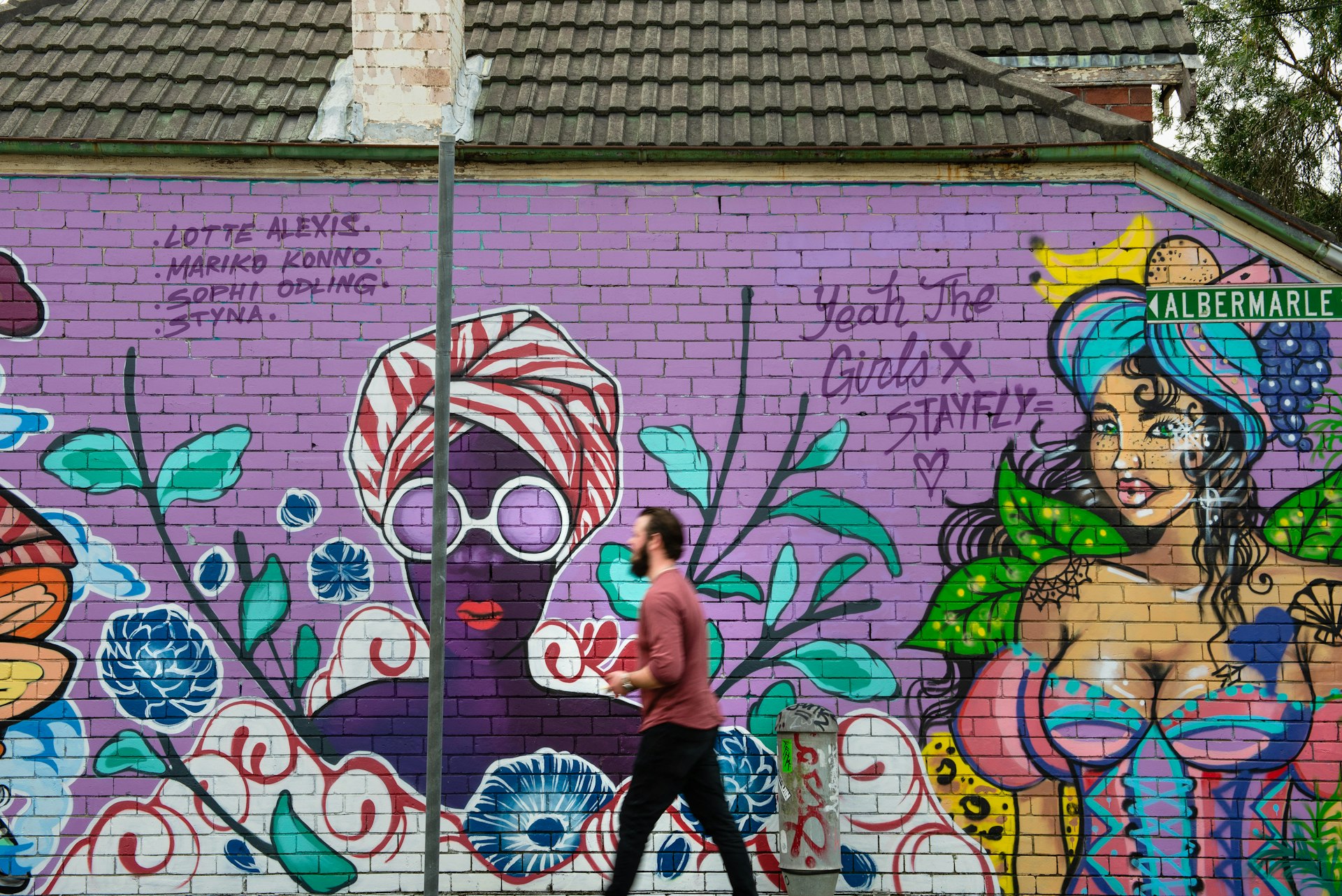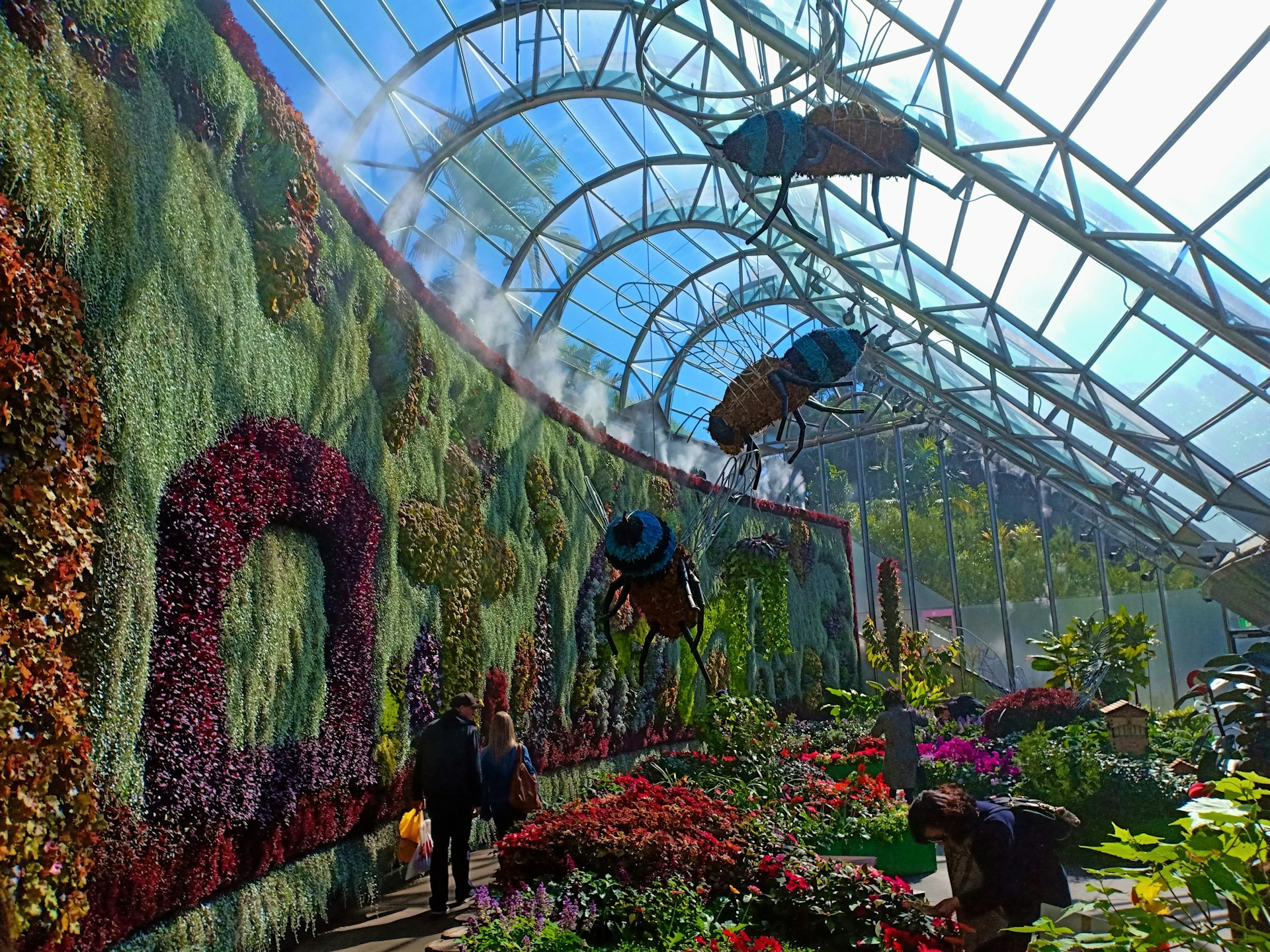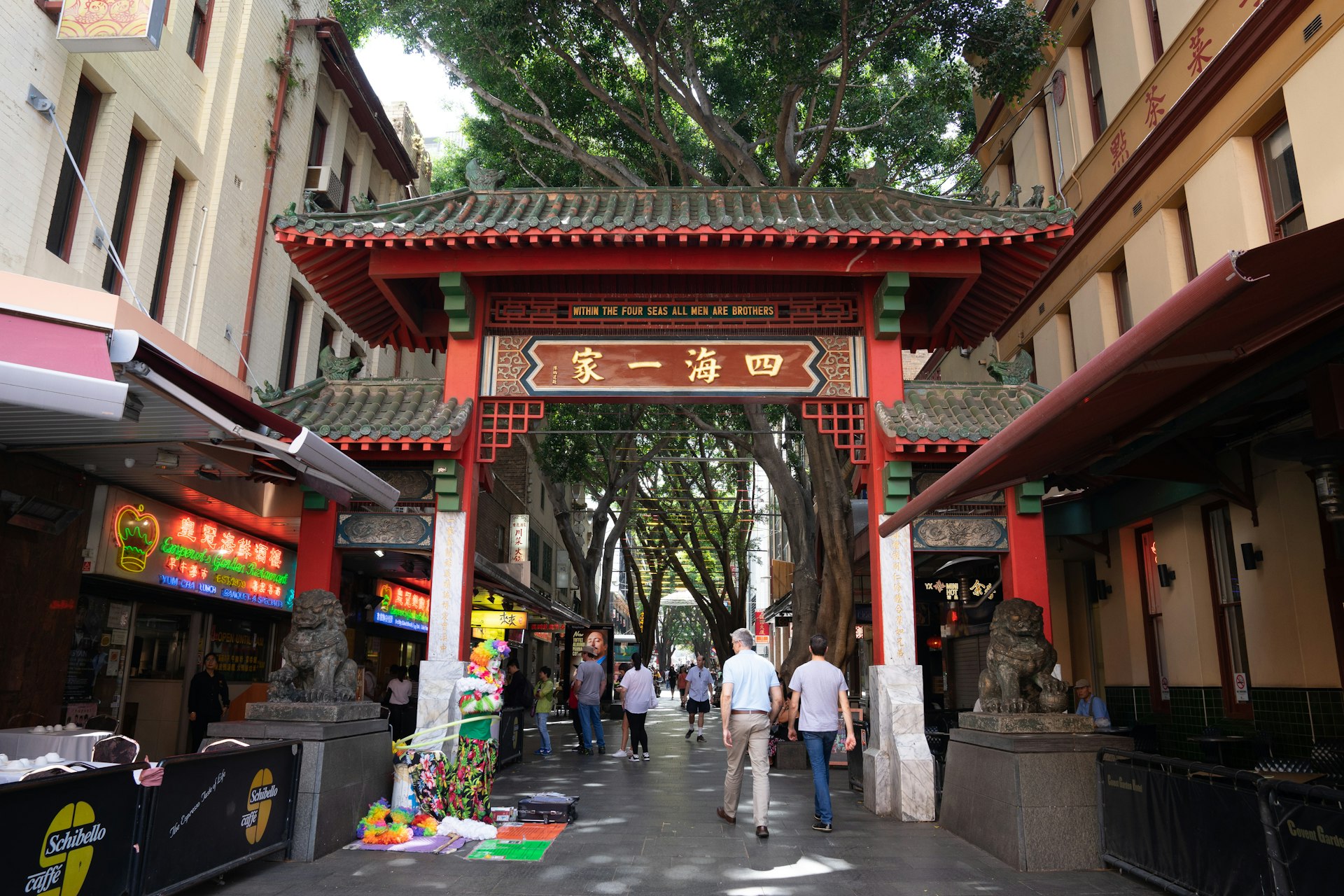Brash, brash, intoxicating Sydney has been blessed with nature like few other cities on Earth. A 60km stretch of stunning sandy beaches is one of the world’s most spectacular harbours: it’s an Australian icon where getting out is everything, whether you’re surfing the waves, marveling at a coastal walk or fresh Dine on exquisite seafood.
This multicultural, cosmopolitan city has numerous districts to explore. Here, we give you a run down of key neighborhoods.

Newtown and the Inner West
Sydney’s best neighbourhoods
Sydney’s sprawling inner west is a mixed mix of students, urban hippies, lifestyle-focused professional couples and artists. This is where you like your food plant-based, your wine filtered and your cafe pooch-friendly. At its start is the University of Sydney, a bastion of old-world architecture that dominates the small suburbs of Camp Down, Darlington and Chippendale. Its Chow Chak Wing Museum – new in 2020 – has an impressive collection of artifacts.
As well as a substantial student population, nearby Redfern has a significant Aboriginal community and is the birthplace of the civil rights movement in Australia. The Glebe is also home to a long-established Aboriginal community, students, alternative lifestyles and excellent bookshops.
The Inner West’s most popular burb, Newtown is quirky, from quirky boutiques, yoga studios and cheap Thai (bring your own booze) to trendy bars serving high-end pastoral creations. It is climbing the social ladder, but is still free-thinking and bold. Turn left out of the station to hit the vibrant wagon strip of King Street.
Each of the inner west suburbs is very different, so it’s worth exploring some of them. Hit Petersham for Portuguese, Leichhardt for Italian, Alexandria for warehouse chic, Marrickville for microbreweries and distilleries and Erskineville for its charming village atmosphere and crop of pubs and cafes.
Generally, there isn’t much going on during the day on weekdays, so time your visit in the evening or on the weekend. Although hotel options are limited, it’s a good choice to stay and soak up the local atmosphere, with the sights of the center a short train ride away.
Bondi, Coogee and East Coast
Perfect for singles and sunbathers
Beautiful arcs of sand framed by jagged cliffs are a big part of the Eastern Shore Sydney experience. Most famous is the wide sweep of Bondi Beach, with its haunting scenery and constant procession of beautiful people. This is where Sydney comes to see and be seen, preferably wearing as little as possible.
Bondi’s unique flavor is heavily influenced by the Jewish, British and Kiwi immigrants who settled it before it became hip. Although popular with tourists, Bondi, just off the main road in Campbell Parade, you’ll find cafes and pubs where Sydney ciders predominate.
South of Bondi and reached via the excellent coastal walk that hugs the cliffs and bays of this stunning piece of Sydney real estate, Bronte is a steep-sided coastal neighbourhood, with its bowl-shaped park lined with picnic tables and barbecues. is full of Also to the south is Clovelly’s protected concrete swimming inlet, a great place to dust off your snorkel.
Next stop is Coogee to the south, with a wide and beautiful beach, and a laid-back backpacker and local scene in pubs and shops. Along with the beaches, locals also love the famous saltwater pools that line this stretch of coast.
The east coast is the prime hostel area and also has attractive boutique sleeps. It has a wonderful atmosphere but is at least 30 minutes by bus to downtown Sydney.

Paddington, Surrey Hills and Darlinghurst
Great for dining and shopping
Rows of Victorian terraced houses remain in this once working-class neighborhood, but they now command eye-watering seven-figure price tags and are home to affluent young urban professionals, who I also include a strong LGTBQIA+ community.
Style rules the roost, whether you’re browsing the fashion boutiques, keeping up with the latest coffee trends or indulging in the haute cuisine tasting menu everyone’s talking about. Is. It is a prime place to stay with excellent boutique hotels and a neighborhood atmosphere within easy access to the city centre.
The steep streets of Surrey Hills are home to a cornucopia of Sydney’s best and trendiest restaurants, chic cafes and upscale pubs. The warehouses on the moody lower valleys of the suburb near Central Station are remnants of the local rag trade and print industry. They now include coffee shops, art galleries, interior design outlets and apartments.
Just north, and just east of the city, Darlinghurst is synonymous with Sydney’s vibrant and visible LGBTIQA+ community. Lower Oxford Street has traditionally been Sydney’s second mile, and while it has seen better days, it is still home to much of the city’s declining gay scene and the Mardi Gras parade.
Paddington, also known as “Pudo”, is a beautiful, expensive area of beautifully restored terraced houses and steep leafy streets. Built on an ancient walking track used by the people of Godigall, the artery of the suburb is Oxford Street, which extends to nearby Darlinghurst but is far more picturesque in this part. The best time to visit is on Saturdays, when local artisans Market The church grounds are complemented by high street boutiques selling both local and international designer labels. Make sure you also get off at Oxford Street. Much of the suburban character and local life is further into the district.

Circular Quay and The Rocks
Great neighborhood for historic buildings and landmarks
At some stage you will almost certainly reach the Rocks. If you haven’t, you haven’t really been to Sydney. The Rocks, unrecognizable from the squalid place it was in the convict era, is now an “old world” tourist attraction.
This tourist-focused neighborhood is home to many of Sydney’s main attractions, including the Sydney Opera House, museums, the Museum of Contemporary Art, and the Royal Botanic Gardens, but it’s also worth exploring away from the big-ticket attractions. , whose beautiful streets to stroll. Admiring the waterfront views offered by Miller Point or Barangaroo Reserve. Booking a local-led tour of the Botanic Gardens or the Rocks area is highly recommended and will allow you to look beyond the colonial history and understand the ancient and deep connection of the Gudigal people with the land.
Kick back at night for a drink in a historic pub or catch a show at the Walsh Bay Theatre. Some of Sydney’s most charming hotels and restaurants can also be found here, offering some of the best views of the harbour.
The most spectacular way to get here is to get a train (or ferry) to Milsons Point, then walk back across the Sydney Harbor Bridge (20 minutes) to the Rocks. It gets you up close and personal with the city’s beloved “Coathanger”, with the roar of traffic to your right and a stunning panorama of Sydney to your left.
King’s Cross, Potts Point and Woolloomooloo
Perfect for backpackers
Close to the city and with remnants of its red light district history, King’s Cross attracts backpackers and Sydney eccentrics with its proximity to the city and great places to eat and drink that won’t break the budget. The front door of “The Cross” looks worlds away from gracious, tree-lined Potts Point and Elizabeth Bay. And then the old sailors’ district of Woolloomooloo under the water – you’re not a Sydneysider if you can’t spell it! – There are glitzy pier restaurants and a handful of characterful pubs.
It makes sense to start exploring the area around the cross, at the top of William Street, and let gravity pull you down. From the Coca-Cola sign that marks the entrance to the district, explore Darlinghurst Road – where tourist shops and backpacker hostels these days outweigh the dwindling strip club scene – before leafy Victoria. before strolling down the street and Potts Point’s other upscale markets and cafes.
Under the docks, Woolloomooloo has also cleaned up its act. The famous Harry’s Cafe d’Wheels and the naval base are still here, but the drunken sailors are in short supply, and the pier restaurants have a wonderful parade of see-and-be-seen. From here, it’s a very short trip to Sydney’s premier classical gallery, the Art Gallery of NSW. The stunning new Sydney Modern building – with a focus on Indigenous Australian art – opens here in December 2022.
Manly and the North Shore
Perfect for surfers
Relaxed Manly clings to a narrow strip of land between the sea and harbor beaches. With its frenetic surfers and laid-back locals, it makes a refreshing change from some of the stuffier port suburbs nearby. Manly’s name comes from a description of Governor Philip’s trusted Kyme warriors whom he met while exploring the area in the early days of the Penal Colony.
The Corso is the main mall connecting Manly’s sea and harbor beaches, where surf shops, burger joints, juice bars and pubs abound. The refurbished Manly Wharf has classic pubs and restaurants, and the back streets are dotted with some nice cafes and small bars. To get here, take the perfect Sydney ferry – basically a harbor cruise without the commentary. It’s only half an hour away from Circular Quay, making Manly an option for a relaxing stay. Beyond the beach, there are great walks in and around the Manly Scenic Walkway to North Head and Spit Bridge.
Stretching north of Manly to stunning Palm Beach, the area known as the “North Shore” marries the suburbs with spectacular stretches of sand, almost all with excellent surfing when the conditions are right. A good reason to get yourself out here is to explore the local area, which is short on world-famous attractions but rich in wonderful experiences. Climb the Berengwe Lighthouse for a classic photo of Palm Beach and Pittwater (in winter you can stop to watch the whale migration) or grab a cold beer overlooking the sea at the glitzy Newport Arms Hotel.

Darling Harbour, Chinatown and Pyrmont
Perfect for peak tourist vibes
Between the flyovers is Darling Harbour, Sydney’s purpose-built tourist hub, which opened in 1988 to celebrate Australia’s bicentenary as a colony. Every inch of this former dockland is given over to tourist attractions including the Sydney Sea Life Aquarium and the excellent Australian National Maritime Museum, as well as bars and restaurants (the best places to eat are in the north of the area, in the Barangaroo precinct. are). Darling Harbor has a different vibe at night, where strolling couples replace sunbathing families. Fireworks displays occur with alarming frequency. Most Saturday nights are a blast.
The southern end of the Darling Harbor precinct blends into Sydney’s ever-expanding Chinatown, full of food courts, restaurants and bubble tea joints in one of the city’s most prominent and best-value dining districts.
West of Darling Harbour, dive into Pyrmont for historic converted warehouses and a more local Sydney scene. Here, the Sydney Fish Market is a must-see if you’re a seafood fan and the Star Casino shelters several excellent restaurants in and around it. If you prefer, there are some thrilling harbor strolls, far off the tourist beat. Pyrmont’s top hotels make great places to stay with easy access to the city.
This article was first published on July 22, 2021 and was updated on October 9, 2023.
